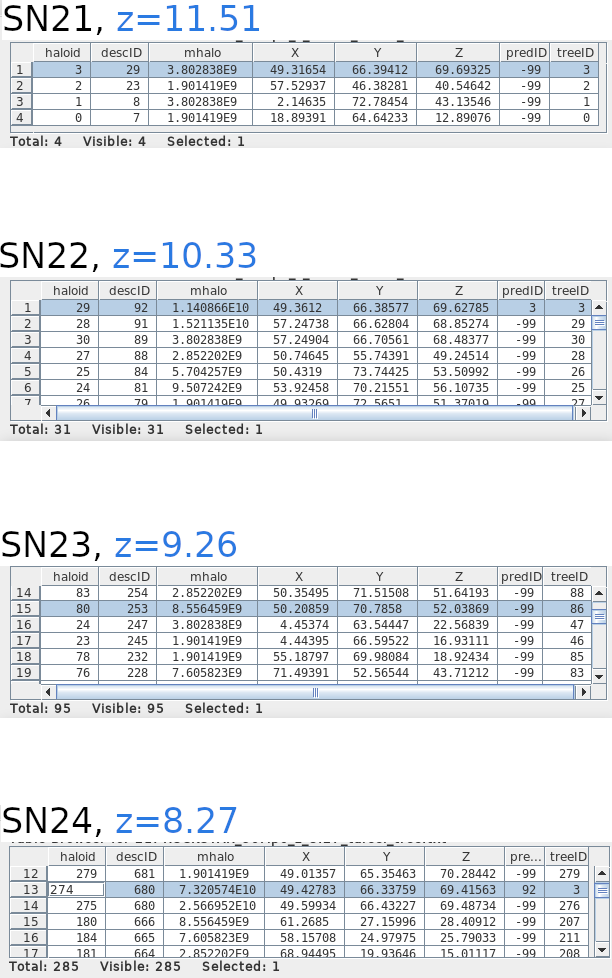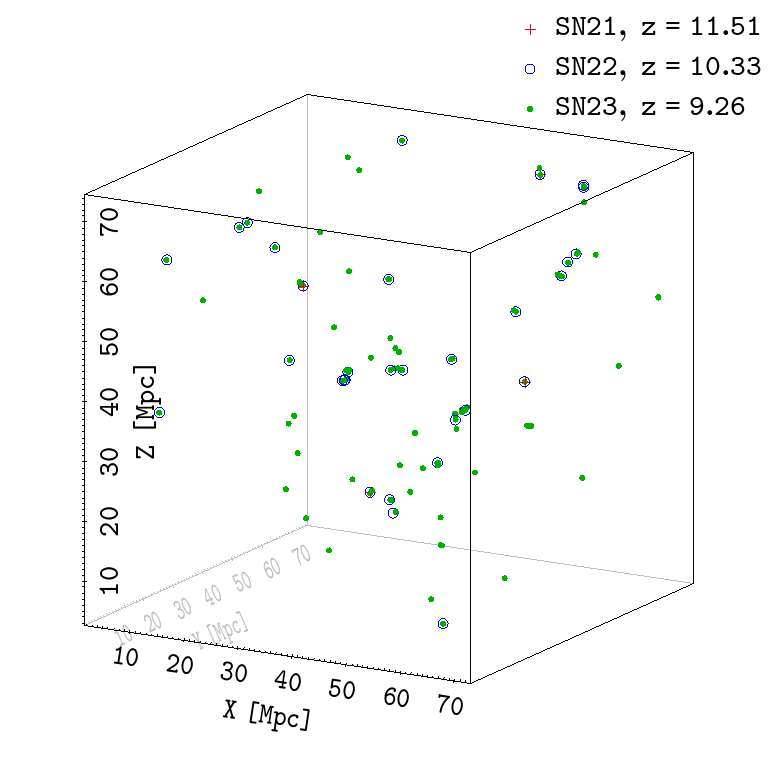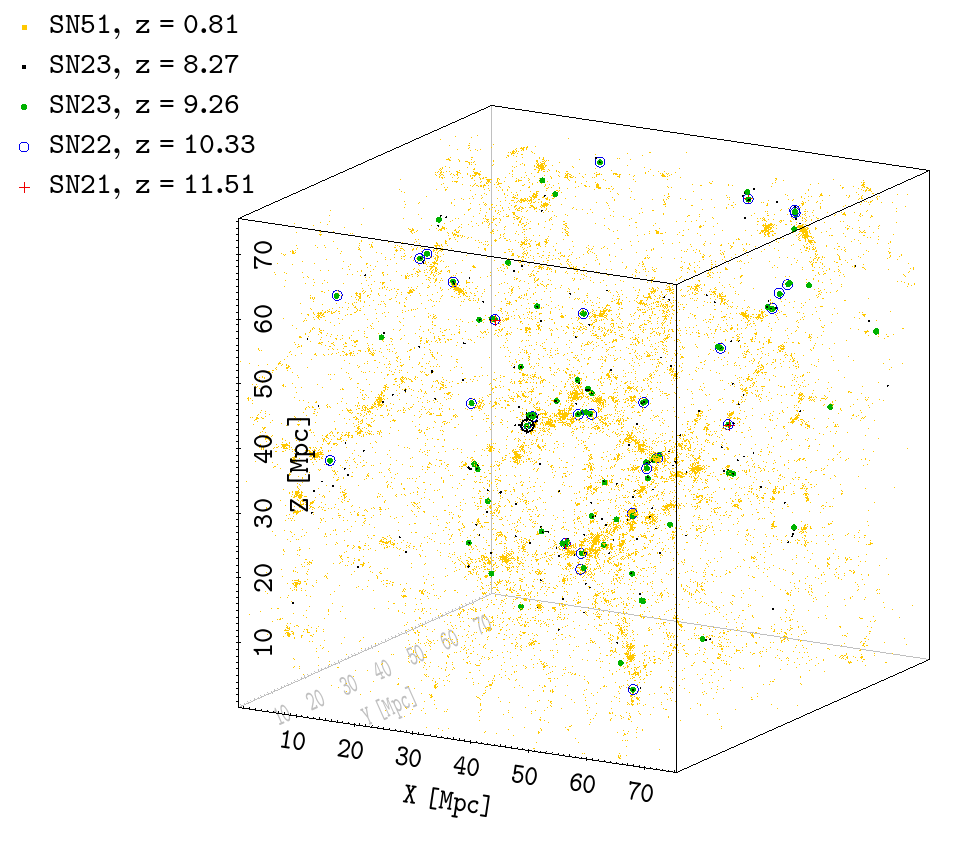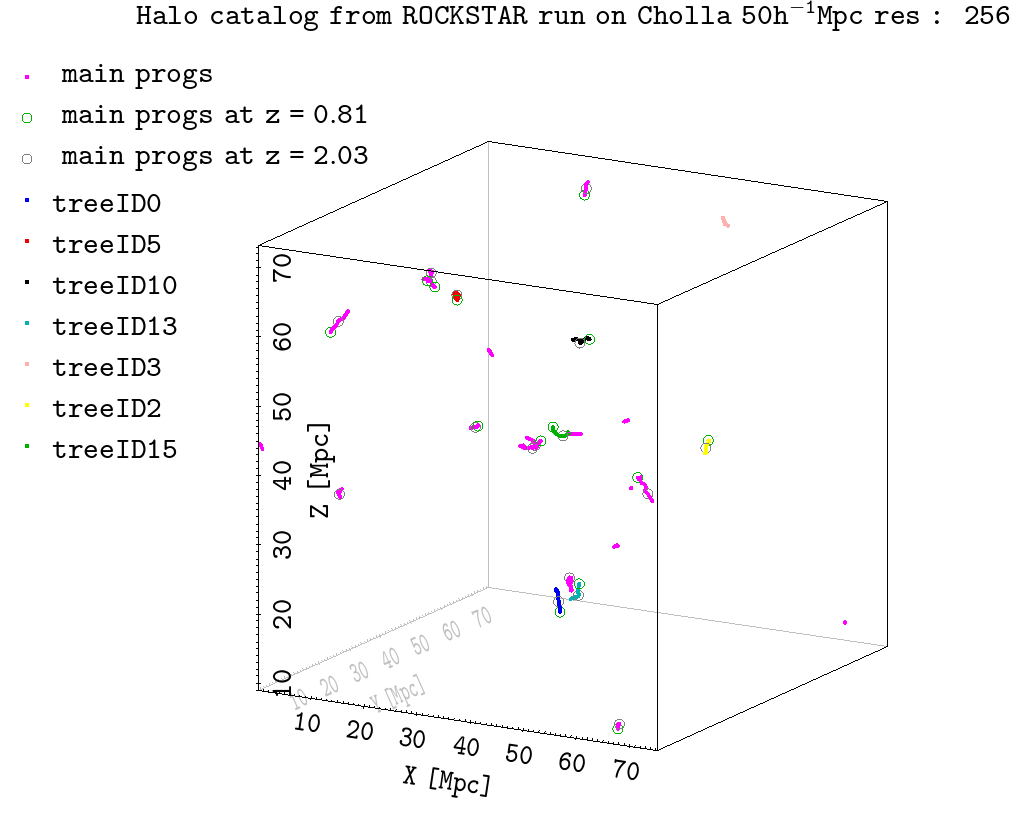Welcome to Doris Stoppacher's personal webpage
Personal research and project web page
A testrun on merger trees
Summary: In this post we study the redshift evolution of main progenitor halos in the Cholla simulation and show how we can easily construct merger trees of the same progenitors using two identification numbers provided by the halo finder as standard output.
Objectives of this test run
In this test run we aim to test if we can produce a valid merger tree of the main progenitor halos using only
- the ROCKSTAR halo finder (Behroozi et al. 2013a) to identify the halos
- the descendant identification numbers (IDs) -- descIDs provided by ROCKSTAR to link halos between snapshots. This ID represents the ID of the same halo in the next snapshot (moved forward in time).
These merger tree will only use the descID to make a connection between halos as a simple approach. Note that no tree builder algorithm was used therefore the merger tree was not fixed for e.g. missing links between snapshots or filling and correcting missing halos. See Behroozi et al. 2013b for details on that topic.
Task overview
- Run ROCKSTAR on the Cholla simulation (Schneider & Robertson 2015, Villaseñor et al. 2020)
- Convert ASCII output files of Rockstar which are named as out[snapshot].list into a custom HDF5 format.
- Use the haloid (ID of a certain halo in this snapshot) and the descIDs (the ID of the same halo in the next snapshot) to link a halo between snapshots.
- Introduce to more IDs which form together with the haloid and descIDs a set of IDs which identifies a certain halo uniquely within the entire merger tree and at every snapshot. Those are the predID (the ID of the same halo a snapshot one step back in time) and the treeID (an ascending counter assigned when the very first halo in the merger tree was detected. The lower the number the earlier the first progenitor was detected!) of the tree the halo sits on.
- Construct a merger tree using the set of four IDs [haloid,descID,predID,treeID].
- Validate the merger tree with comparing the number of particles found for a certain halo.
Task1: Find halos!
Run the ROCKSTAR halo finder catalog Behroozi et al. 2013a on the Colla particle simulation box with side-length 50 \(h^{-1}\)Mpc.
Status: Task completed
Task2: Convert raw output from ROCKSTAR to custom file format
Thereby the units of kpc were converted to Mpc and the Hubble parameter absorbed in the value of the halo property.
Status: Task completed
Task3: Link the halos between the snapshots
In this section we show that with the combination of haloid and descID which were provided by the ROCKSTAR as standard outputs the main progenitors (also the most massive progenitors) can be traced easily back and fourth in redshift.



Status: Task completed
Task3: Construct a merger tree of the main progenitors
After providing that we identify the correct halos when linking haloid and descID for each snapshot we can construct a simple merger tree considering the main progenitor halos.

Status: Task completed
Follow-up task & open questions
- Verify the approach of connection halos by the provided haloid and descID by comparing directly with the numbers of particle assigned to the halos between snapshots.
- How does ROCKSTAR assign the descID when running?
- Calculate halo mass function and accretion rates.